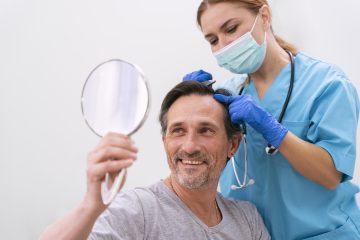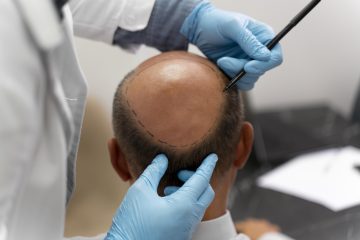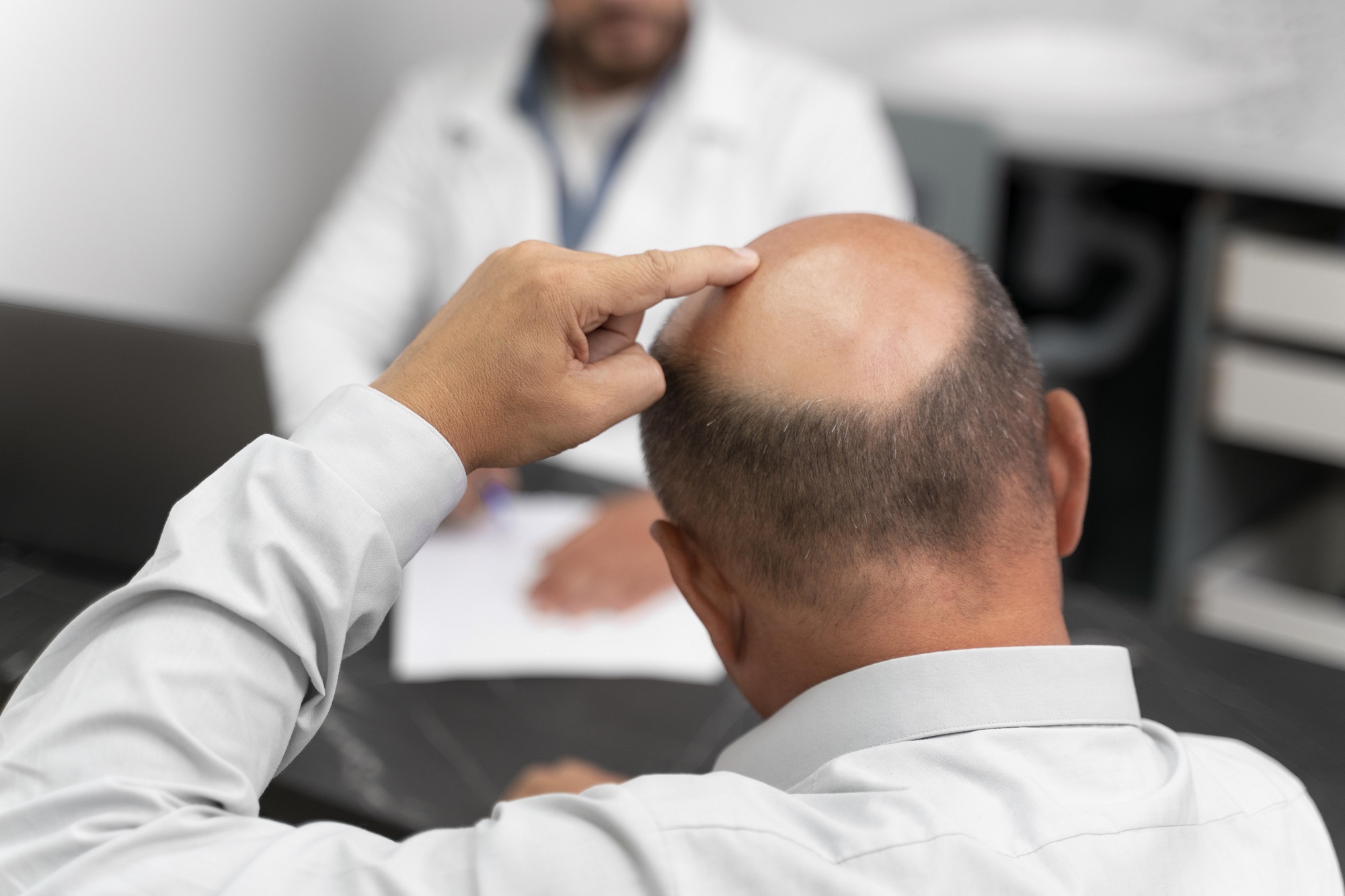Hair loss can be a frustrating and distressing experience for many, affecting self-confidence and overall well-being. Whether caused by genetics, hormonal changes, or environmental factors, thinning hair or balding is a common concern. Fortunately, treatments like Minoxidil, an FDA-approved topical solution, have been shown to stimulate hair regrowth. Minoxidil works by increasing blood flow to the hair follicles, providing them with the necessary nutrients and oxygen to support new hair growth. Understanding the hair growth cycle can help individuals make informed decisions about using Minoxidil as part of their hair care routine.
The hair growth cycle consists of three main phases: anagen (growth), catagen (transition), and telogen (resting). During the anagen phase, the hair follicles are actively growing and producing new hair. The catagen phase follows, acting as a transitional stage where the hair follicles prepare for the resting phase. Lastly, the telogen phase is when the hair follicles become dormant, and the hair eventually falls out. By enhancing blood circulation to the follicles, Minoxidil helps prolong the anagen phase, encouraging more prolonged hair growth and improving the chances of regrowth in thinning areas.
How Does Minoxidil Work?
Minoxidil is a vasodilator, which means it helps to dilate blood vessels and increase blood flow to the scalp. This increased blood flow delivers more oxygen and essential nutrients to the hair follicles, stimulating them to enter and remain in the anagen (growth) phase for a longer period of time. As a result, the hair follicles are able to produce new, thicker, and healthier hair strands.

In addition to its vasodilatory effects, Minoxidil also has other mechanisms of action that contribute to its hair-growth-promoting properties. One of these mechanisms is the activation of potassium channels within the hair follicle cells. When Minoxidil interacts with these potassium channels, it can trigger a cascade of cellular events that ultimately lead to the proliferation and differentiation of hair follicle cells, thereby stimulating new hair growth.
Another way in which Minoxidil promotes hair regrowth is by extending the anagen (growth) phase of the hair cycle. Normally, the anagen phase lasts for several years, but as we age or experience certain hair loss conditions, this phase can become shorter, leading to thinner and shorter hair strands. Studies show that Minoxidil prolongs the anagen phase, allowing the hair follicles to produce longer, thicker, and more robust hair.
The FDA Approval Process for Minoxidil
Minoxidil was initially developed and approved by the FDA for the treatment of high blood pressure. However, during the clinical trials, researchers observed an unexpected side effect: patients were experiencing increased hair growth. This discovery led to the development of Minoxidil as a topical treatment for hair loss and regrowth.
The FDA approval process for Minoxidil as a hair loss treatment was a rigorous and extensive one. Researchers conducted numerous clinical studies and trials to evaluate the safety and efficacy of Minoxidil for both men and women experiencing hair loss or thinning hair. Researchers designed these studies with large sample sizes to assess various factors that contribute to hair growth, such as hair count, hair thickness, and overall hair density.
The results of these studies were overwhelmingly positive, demonstrating that Minoxidil was effective in stimulating new hair growth and improving the overall appearance of the hair. Based on the strong scientific evidence and the positive outcomes observed in the clinical trials, the FDA approved Minoxidil as a safe and effective treatment for male pattern baldness and female pattern hair loss.
Research and Studies on the Effectiveness of Minoxidil

Since its initial approval, Minoxidil has been the subject of extensive research and numerous studies that have further validated its effectiveness in promoting hair regrowth. The Journal of the American Academy of Dermatology published one of the most well-known and widely-cited studies on Minoxidil in 1987.
This study involved a group of men with male pattern baldness who were treated with either Minoxidil or a placebo. The results showed that the group using Minoxidil experienced a significant increase in hair count and hair density compared to the placebo group. Additionally, the Minoxidil group reported a higher satisfaction with the treatment and a greater improvement in their overall hair appearance.
Similar studies have been conducted on women experiencing female pattern hair loss, and the results have been equally promising. A study published in the Journal of the American Academy of Dermatology in 1991 found that women using Minoxidil experienced a significant increase in hair growth and a reduction in hair shedding compared to those using a placebo.
Proper Usage and Application of Minoxidil
To ensure the best possible results when using Minoxidil, it’s important to follow the proper usage and application instructions. Minoxidil is typically available in two formulations: a 2% solution and a 5% solution. Experts generally recommend the 2% solution for women, while they more commonly prescribe the 5% solution for men.
Regardless of the formulation, the application process is similar. Apply Minoxidil directly to the scalp, focusing on the areas where hair loss or thinning is most prominent. Experts recommend applying the solution twice a day, once in the morning and once in the evening, to maximize the effectiveness of the treatment.
When applying Minoxidil, ensure that you distribute the solution evenly throughout the scalp and allow it to dry completely before styling your hair or engaging in other activities. It’s also important to avoid getting the solution in the eyes or on the face, as this can cause irritation or other adverse effects.
Potential Side Effects and Precautions of Using Minoxidil
While Minoxidil is generally well-tolerated and considered safe for most users, there are a few potential side effects and precautions to be aware of. The most common side effects associated with Minoxidil use include:
- Scalp irritation or dryness
- Itching or redness
- Unwanted hair growth in areas other than the scalp
- Temporary increase in hair shedding (known as “dread shed”)
In most cases, these side effects are mild and tend to subside over time as the body adjusts to the treatment. However, if the side effects persist or become more severe, it’s important to consult with a healthcare professional.
Additionally, Minoxidil should not be used by individuals with certain medical conditions, such as uncontrolled high blood pressure or heart disease. Pregnant or breastfeeding women should consult their healthcare provider before using Minoxidil, as their healthcare provider has not yet fully established the treatment’s safety during these stages of life.
Combining Minoxidil with Other Hair Loss Treatments
While Minoxidil can be an effective treatment on its own, some individuals may choose to combine it with other hair loss treatments to achieve even better results. One of the most well-known and commonly-used combination treatments is Minoxidil and Finasteride.

Finasteride is a prescription medication that works by inhibiting the production of dihydrotestosterone (DHT), a hormone that is a major contributor to male pattern baldness. By combining Minoxidil and Finasteride, individuals can address both the blood flow and hormonal aspects of hair loss, potentially leading to more significant and long-lasting hair regrowth.
Another potential combination treatment is Minoxidil and low-level laser therapy (LLLT). LLLT is a non-invasive, light-based therapy that stimulates hair follicle activity and promotes new hair growth. By using Minoxidil in conjunction with LLLT, individuals may experience a synergistic effect, where the two treatments work together to enhance the overall effectiveness of the hair regrowth process.
Conclusion
In conclusion, Minoxidil is a highly effective, FDA-approved treatment for hair regrowth that works by increasing blood flow to the hair follicles and stimulating new hair growth. Minoxidil has been shown to be a safe and reliable option for both men and women experiencing hair loss or thinning hair through its various mechanisms of action.
Whether you’re dealing with male pattern baldness, female pattern hair loss, or any other form of hair shedding, Minoxidil may be a viable solution worth considering. By understanding how Minoxidil works, following the proper usage and application guidelines, and being mindful of potential side effects, you can maximize the benefits of this treatment and achieve the healthy, full head of hair you desire.
Remember, hair loss can be a complex and multifaceted issue, and individual results may vary. It’s always best to consult with a healthcare professional, such as a dermatologist or trichologist, to determine the underlying cause of your hair loss and develop a comprehensive treatment plan that addresses your specific needs. With the right approach and the support of medical professionals, you can take the first step towards regaining your confidence and enjoying the benefits of a healthy, vibrant head of hair.
